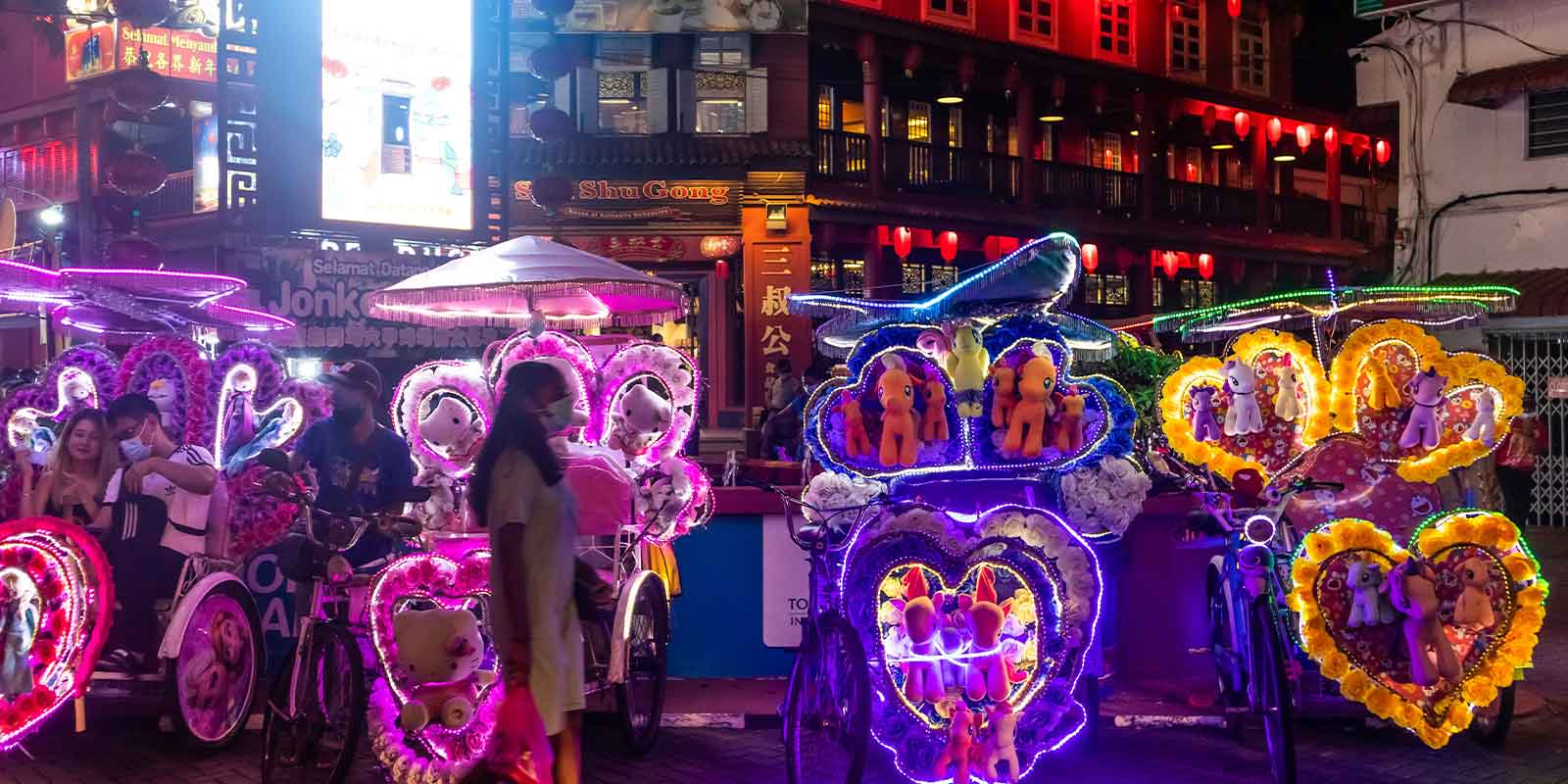Malacca: preens with its wealth of colorful trishaws, home-grown galleries and crimson colonial buildings.

Malacca has an interesting mix of influences Chinese, Portuguese, Netherlands and UK, and is considered the most historical Malaysian city.
Malacca, in the past was the most important commercial port in the region, and now has become a forgotten corner. Decrepit-looking junks still sail up the river, giving the port the charm of the landscapes in which time has stopped, and the city retains its mysterious Chinese streets, antique stores, temples and buildings that evoke with nostalgia the European colonial powers of the past.
The most impressive Dutchman period relic is the great pink Municipality, Stadthuys, built between 1.641 and 1.660. Believed to be the oldest dutchman building in Asia and displays all the characteristics of the Netherlands colonial architecture (incredibly heavy doors and latticed windows). The building houses government offices and an excellent Ethnographic Museum, which highlights aspects of local culture and history. The majestic ruins of St. Paul's Church, built by the Portuguese for over four hundred years, are in a beautiful setting on the hill. The church fell into disuse when the dutchmen arrived, although still surrounded by old Netherlands gravestones. The British used the church as a gunpowder store.
Those who prefer more colorful religious architecture can visit the Cheng Hoon Teng Temple in the Old Town. Built in 1.646, is the oldest Chinese temple in Malaysia, and both materials, were used as the artisans who participated in its construction, came from China. The old town of Malacca is a fascinating place to wander, and there are many of the known antiquarians in the city, a tour of the street Jalan Hang Jebat is worthy to discover the best of them.


SOCIAL









